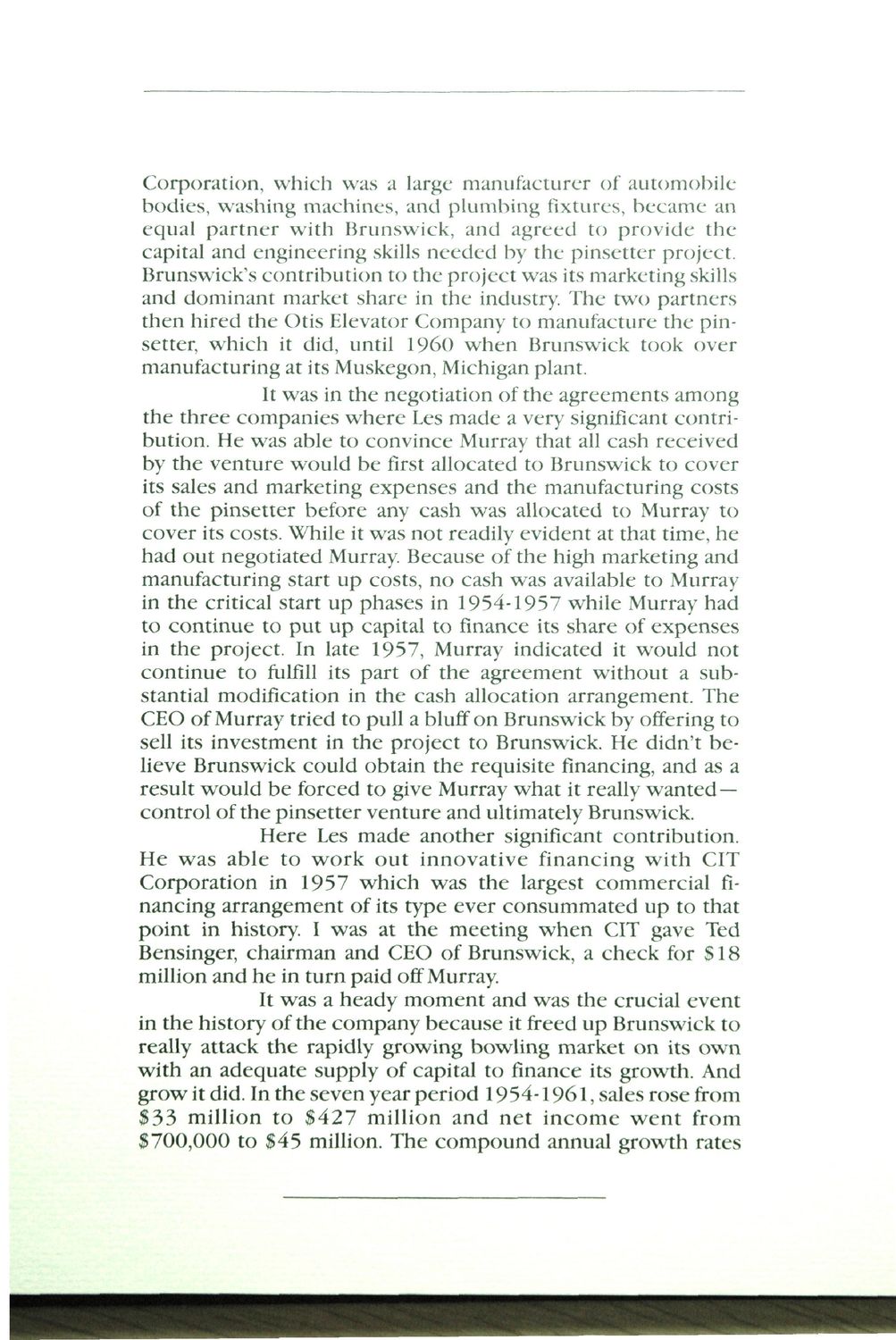| |
| |
Caption: Dedication - Swanlund Administration Building
This is a reduced-resolution page image for fast online browsing.

EXTRACTED TEXT FROM PAGE:
Corporation, which was a large manufacturer of automobile bodies, washing machines, and plumbing fixtures, became an equal partner with Brunswick, and agreed to provide the capital and engineering skills needed by the pinsetter project. Brunswick's contribution to the project was its marketing skills and dominant market share in the industry. The two partners then hired the Otis Elevator Company to manufacture the pinsetter, which it did, until I960 when Brunswick took over manufacturing at its Muskegon, Michigan plant. It was in the negotiation of the agreements among the three companies where Les made a very significant contribution. He was able to convince Murray that all cash received by the venture would be first allocated to Brunswick to cover its sales and marketing expenses and the manufacturing costs of the pinsetter before any cash was allocated to Murray to cover its costs. While it was not readily evident at that time, he had out negotiated Murray. Because of the high marketing and manufacturing start up costs, no cash was available to Murray in the critical start up phases in 1954-1957 while Murray had to continue to put up capital to finance its share of expenses in the project. In late 1957, Murray indicated it would not continue to fulfill its part of the agreement without a substantial modification in the cash allocation arrangement. The CEO of Murray tried to pull a bluff on Brunswick by offering to sell its investment in the project to Brunswick. He didn't believe Brunswick could obtain the requisite financing, and as a result would be forced to give Murray what it really wanted— control of the pinsetter venture and ultimately Brunswick. Here Les made another significant contribution. He was able to work out innovative financing with CIT Corporation in 1957 which was the largest commercial financing arrangement of its type ever consummated up to that point in history. I was at the meeting when CIT gave Ted Bensinger, chairman and CEO of Brunswick, a check for $18 million and he in turn paid off Murray. It was a heady moment and was the crucial event in the history of the company because it freed up Brunswick to really attack the rapidly growing bowling market on its own with an adequate supply of capital to finance its growth. And grow it did. In the seven year period 1954-1961, sales rose from $33 million to $427 million and net income went from $700,000 to $45 million. The compound annual growth rates
| |